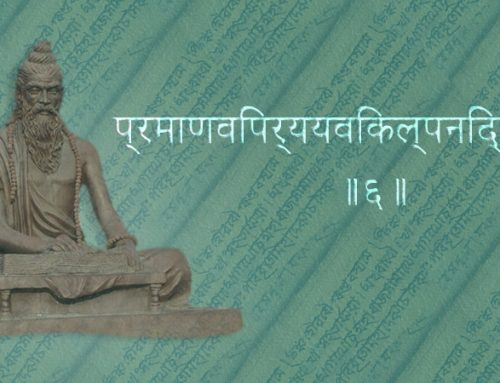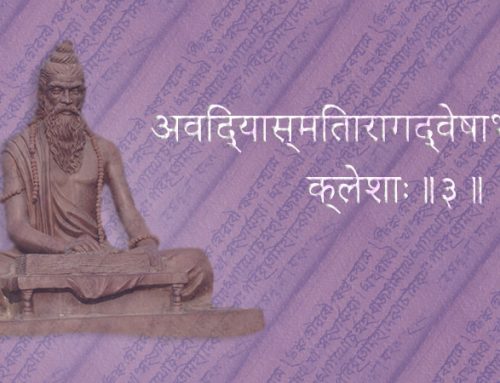Written by Ana Davis
These days in yoga and meditation circles, and even in the broader community, it’s almost become a fashion statement to adorn oneself with Japa beads. Attractively fashioned from a variety of materials including sandlewood, crystal, shell, coral, tulsi, and rudraksha (blue-marble tree) seed, it’s not surprising that these beads have become a ‘must-have’ for many yogic-‘organici’ inspired, fashionistas! Jokes aside though, what is the deeper significance of these Japa Malas?
Japa anusthana is a devotional meditation practice that involves repeatedly reciting a mantra, a word or phrase with specific sacred resonance, as a means of achieving ‘pratayahara’ (sense-withdrawal), and ultimately, ‘samadhi’ (enlightenment).
According to Swami Satyananda Saraswati, the three great obstacles to meditation are impurity, ignorance and mental distraction, and these can easily be removed through dedicated practice of japa yoga.
The word ‘japa’ means ‘to rotate’. One way the rotation of consciousness is achieved is by use of the tool of a ‘mala’, a garland or string of beads. A practitioner either audibly or silently chants a mantra corresponding to each of the beads of the mala, this helps her track the number of her repetitions, and literally, stay on track, with her meditation practice. “Japa yoga means union of the self with the highest existence through the rotation of consciousness,” summarises Swami Satyananda.
Japa can be performed in three main ways: Baikhari (audible) , Upanshu (whispered), and the most sophisticated is, Manasik (mental) recitation. American yoga researcher and author, George Feuerstein, says that the most important ingredients for success in japa or mantric recitation is “mindfullness, regularity and a large number of repetitions”. It is therefore generally recommended that the yogi recites his mantra from 108 to 1,080 times daily.
Significance of the sacred number: 108
Most commonly malas are comprised of 108 beads. This number repeatedly arises in yoga and other traditions like Buddhism. This then begs the question: what is the meaning behind this highly symbolic number?
Well…. when I looked into it, I unearthed a number of fascinating possible explanations. George Feuerstein says that the key lies in astronomy – the Vedic sages were aware that the sun and the moon’s average distance from the earth is 108 times their respective diameters. “Symbolically speaking, 108 is the number signifying the midregion (antariksha) the space between heaven and earth,” writes Feuerstein. “Thus, the 108 beads can be taken to represent an equal number of steps from the material world to the luminous realm of the divine Reality – India’s version of Jacob’s ladder”.
Another explanation claims that each one of the 108 beads corresponds to each of the earthly desires to be transcended.
Swami Sivananda’s interpretation of the symbology is that a person breathes, on average 21,600 times every day, and if one does 200 malas, or rounds of japa, it totals this same number: 21,600. Therefore, the yogi is performing one repetition for every breath! “If he does 200 malas of japa every day, that amounts to remembrance of God throughout the day,” says Swami Sivananda. He also says malas may contain beads which form divisions of 108 also, so that the same calculation can be maintained.
Elizabeth Gilbert, in her popular book, “Eat, Pray, Love”, suggests that the number 108 is “a perfect three-digit multiple of three, its components adding up to nine, which is three threes”. She concludes that three is the number representing “supreme balance” and the holy trinity. In the yogic tradition this corresponds to the tri-murti, the three deities: Brahma (the Creator), Vishnu (the Preserver), and Shiva (the Destroyer).
The 109th Bead
Those who have practiced Japa Mala will know that there is in fact a 109th bead. There are almost as many explanations of the meaning of this extra bead as there are for the significance of the number 108.
This bead is sometimes called the ‘sumeru’ or summet of the mala (alluding to the sacred Mount Meru), and hangs outside, separately from the string of the other 108 beads, like a pendant. On a practical level the sumeru serves to denote a starting and ending point for japa. When a practitioner reaches this bead, he turns around and starts a new cycle. The sumeru is also sometimes called the ‘godhead’ bead and as such the yogi should never ‘cross’ this bead.
Feuerstein explains that the 109th bead, or “master bead”, can also represent ones guru. Gilbert says when you “reach this marker during prayer, you are meant to pause from your absorption in meditation, and thank your teachers”.
Swami Sivananda adds that every time you come to the sumeru or “Meru” bead, “you have gone one step further on the spiritual path and crossed over one obstacle. A portion of your ignorance is removed.”
Finally, Swami Satyananda, explains the purpose of the sumeru bead as being to help break any distraction the practitioner may be experiencing. When the yogi’s mind becomes distracted by, in the case of a beginner, “extraneous thoughts”, or in the case of the more advanced practitioner, “unconscious and psychic phenomena”, the practice may become automatic, as the awareness wanders. The sumeru bead therefore serves to bring awareness back into the practice, as the practitioner embarks on a new round.
Why practice Japa Mala?
Swami Satyanda says one of the primary purposes of this practice is to purify the mind and release us from the samskaras (past impressions) and vasanas (future desires).
“Our real nature is not our normal state of anxiety, excitement and tension,” explains Swami. “Our nature is Samadhi, pure consciousness, calmness, tranquility, equanimity. We can use the comparison of a mirror that is obscured by layers of grime and dust. Clean the mirror and its natural quality will be revealed, which is to reflect all objects.
“It is the restlessness of the mind which causes all unhappiness and complexes, but these are only impositions. Calm and purify the mind through your sadhana (practice)and experience your true self”.
References
“Meditations from the Tantras”, Swami Satyananda Saraswati
“Tantra: the path to ecstasy”, George Feuerstein
“Japa Mala” (article on the internet), Swami Sivananda
“Eat,Pray,Love”, Elizabeth Gilbert
“Sacred Sanskrit Words,” Leza Lowitz & Reema Datta




